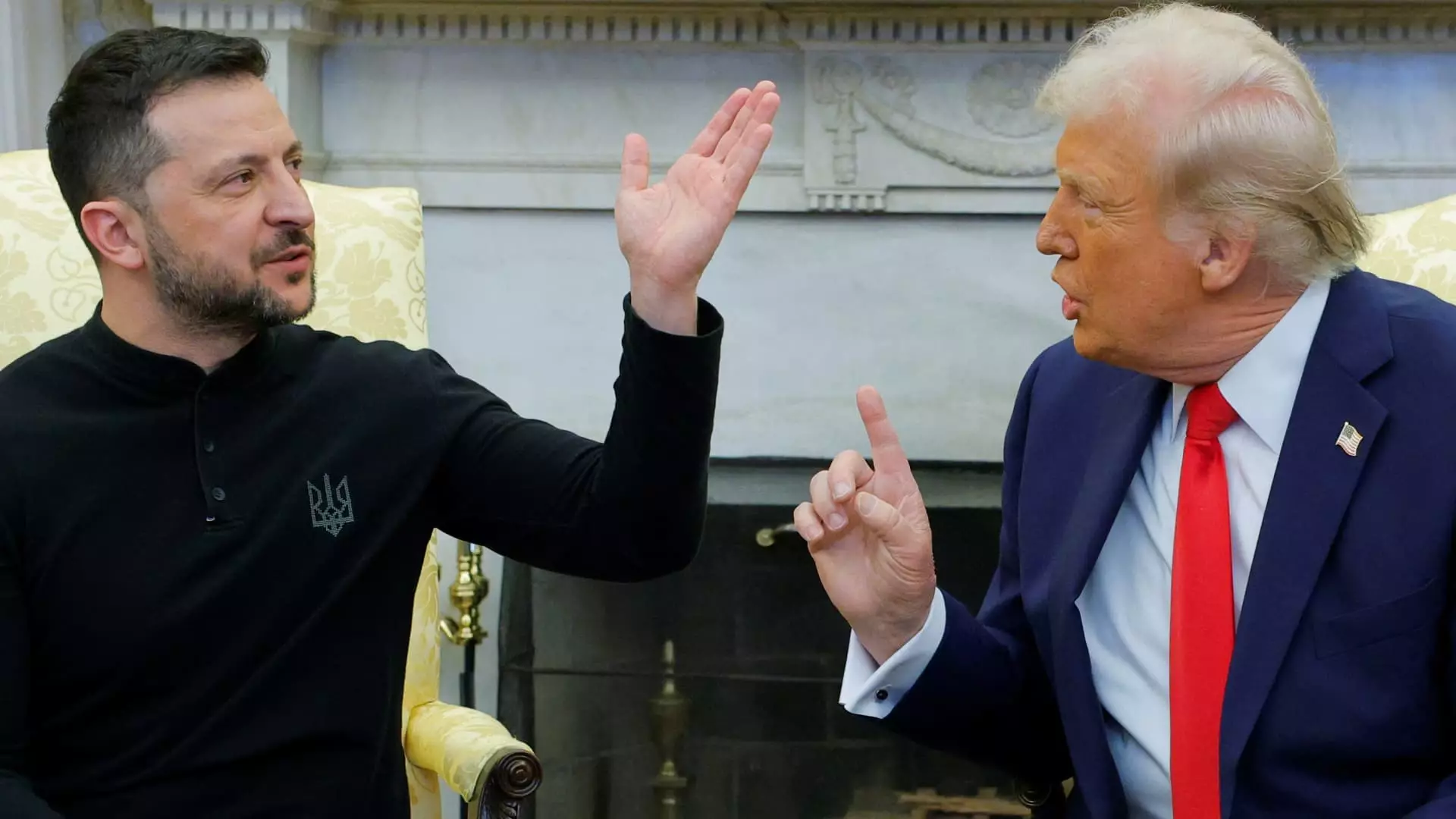The recent Oval Office meeting between President Donald Trump and Ukrainian President Volodymyr Zelenskyy is a case study in diplomatic decorum—or the lack thereof. An explosive confrontation unfolded, revealing not just a clash of personalities but a deeper commentary on international relations and the expectations tied to them. This article analyzes the nuances of their interaction, highlighting the implications for U.S.-Ukraine relations and the perceptions of leadership.
In any governmental meeting, especially one involving heads of state, the conduct and demeanor of participants play an integral role in shaping the dialogue. In this instance, White House Press Secretary Karoline Leavitt detailed how Zelenskyy’s body language—arms folded, eyes rolling—was perceived as a flagrant show of disrespect. This characterization is significant because body language can either facilitate or obstruct dialogue. Trump reportedly deemed Zelenskyy’s approach objectionable, hinting at an unspoken expectation of deference from leaders who are welcomed into his office.
The press secretary’s remark that Zelenskyy referred to Vice President JD Vance informally rather than in a more formal manner as “Mr. Vice President” further fed into the narrative of disrespect. This small detail, while it might seem trivial, highlights cultural differences in diplomatic interactions. In many Western political settings, formality is often seen as a sign of respect, especially in interactions involving senior officials. Zelenskyy’s approach may have been intended to invoke a sense of camaraderie, yet it backfired spectacularly in this context.
Casual Attire as a Symbol of National Resilience
Another contentious point focused on Zelenskyy’s choice of attire. Dressed in a black sweater emblazoned with the Ukrainian national emblem, Zelenskyy faced scrutiny for not adhering to the more traditional suit-and-tie ensemble expected in high-stakes meetings. The White House, and specifically the press secretary, expressed annoyance over his attire, contrasting it with instances in which less formal dress was deemed acceptable. This raises questions about appearances and what they signify in international relations.
Zelenskyy’s defense—”I will wear a suit after this war is over”—is striking. It evokes the narrative of a leader in the trenches, focused on the pressing struggles of his nation rather than on superficial expectations of formal attire. Thus, while the American executives may have viewed his casual clothing as disrespectful, it can also be construed as a bold statement of prioritizing purpose over pretense.
The argument escalated when Zelenskyy openly challenged the U.S. stance that Russian cooperation could be expected in any potential peace agreements. Vance, in response, rebuked Zelenskyy for disrespecting the decorum of the meeting. This exchange reflects the broader context of U.S. foreign policy, which is often mired in skepticism regarding the intentions of Russia, a country that has repeatedly asserted its influence in disputed areas across the globe. The differing perceptions of how to approach Russian negotiations highlight a fundamental disconnect between the two leaders, exacerbating tensions that can affect diplomatic goals.
Moreover, Trump’s defense of Putin during this meeting underscores a complicated relationship characterized by both collaboration and contention. Trump’s insistence that he had a more favorable rapport with the Russian leader adds a layer of complexity to U.S. relations with Ukraine. Zelenskyy, operating from a position of vulnerability due to ongoing conflict, likely views such statements as dismissive of Ukraine’s plight against Russian aggression.
This conflict-laden meeting also echoes past events, particularly the impeachment inquiry led against Trump concerning his earlier communications with Zelenskyy. In that instance, allegations arose that Trump used military aid as leverage for political gain, a scenario that muddles the intentions of U.S. support for Ukraine. This historical context casts a shadow over the current interactions, as Zelenskyy’s presence in the Oval Office may simultaneously embody gratitude for aid and concerns over the strings attached.
Furthermore, these current dynamics are indicative of the larger challenges that face any administration grappling with international diplomacy and geopolitical threats. They reveal how personal interactions and decisions, no matter how seemingly innocent, can have significant ramifications for international alliances.
The Oval Office meeting between Trump and Zelenskyy serves as more than an isolated diplomatic incident; it is emblematic of the complexities that define contemporary international relations. From body language to attire choices, every facet of interaction is magnified under the scrutiny of public observation and political analysis. As leaders navigate these complex waters, it becomes crucial to foster mutual respect and understanding that transcend immediate frustrations. Only then can meaningful dialogue and cooperation flourish in the global arena.


Leave a Reply